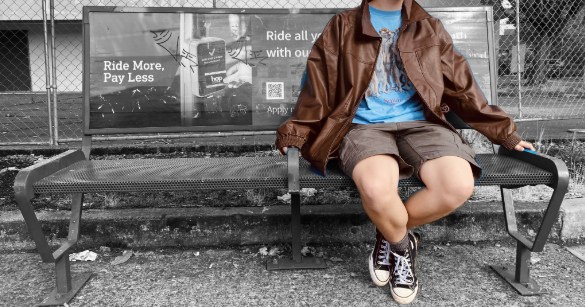
Strolling along the border of one of Mt. Tabor’s reservoirs at a time past prudence, we stopped to admire the moon. Entranced by the shifting reflection in the black water, the forested silence was broken by a sharp cry. Our heads jerked up, realizing the sound was just above us. Our eyes met with frightened curiosity. There it was again, this time a distinct “HOWOOOO,” howled in a piercing, off-kilter chorus. Wide eyes locking, we commenced to sprint back down the dark mountain.
In reality, this anecdote gives more insight into my friend’s and my overly cautious tendencies than it does to the nature of the mighty coyote. As conventional wisdom holds, they’re likely more afraid of you than you are of them. Nonetheless, it’s still quite shocking to come across a wild predator in the middle of a city park. The coyote is covertly abundant in the urban environment. They live right in our midst but go almost completely unseen by us. This is no accident, as it is an intelligent species that has learned how to adapt to the urban environment: and that means staying out of our sight.
The urban coyote is a master of staying hidden, even in very populated areas. Despite occasional sightings, the coyotes occupy green spaces across the entire city. Piecing together their hunting ground from a patchwork of parks, they have shifted their natural hunting hours from dusk to dark to avoid humans. The city provides ample resources, abundant in the animals’ staple of rats and unlimited garbage. The coyotes have even become an important part of the urban ecosystem, as they control the rat population.
The first coyotes were once found only in prairies and deserts in Mexico and Central North America, but due to changes in landscape and the elimination of large predators, they have more than doubled their range. They’re now found from Mexico to Canada, with many cities reporting their first sightings in the past two decades. Portland has had sightings since at least the ‘80s, even though at one time the species was rarely seen west of the cascades.
“I admire their tenacity, intelligence, and strong social bonds,” says Zuriel Rasmussen van Belle, director of the Portland Urban Coyote Project, a collaboration between the Audubon Society and Portland State University. The project’s goals are to research human-coyote interactions in the Portland metropolitan area and to provide information to the public about how to live safely with coyotes. Coyotes are most often monogamous, forming pair bonds usually for life, a rare quality in the animal kingdom. They also spend much time caring for their young. Coyotes are most often sighted alone or in pairs because that is how they hunt. They live in packs of five to seven, each carrying a strong commitment to provide for the rest.
If you do encounter a coyote, do it a favor and yell at it. “The best thing to do is to yell, make a loud noise, or otherwise scare the coyote away. Coyotes tend to be fearful of humans and we are all safer if they maintain that fear,” van Belle advises. Many pet owners are fearful of coyotes eating their animals, but in reality this very rarely happens. To take an extra measure in preventing this, pet owners should not leave any pet food outside of their house overnight. The best course of action when managing the coyote population is: not to. They’re territorial animals, and only a certain number can occupy any territory, so, although resources are abundant, the coyotes won’t overpopulate.
Though skittish and avoidant up close, the coyotes appear curious about us from afar. We would be wise to be the same way.


































Murray Renick • Feb 3, 2019 at 1:43 am
Nice article.
thea • Jul 15, 2022 at 12:35 pm
Informative. I like the tenor of this report toward increasing understanding without being alarmist or inflammatory.